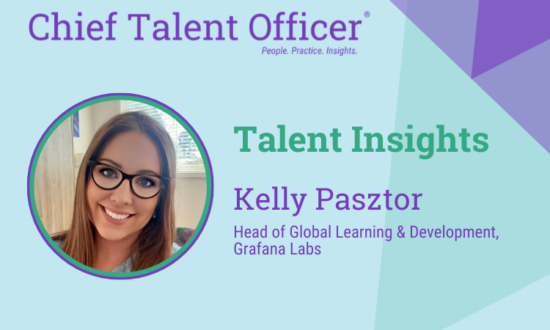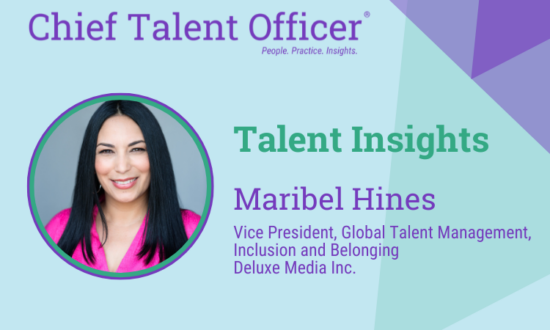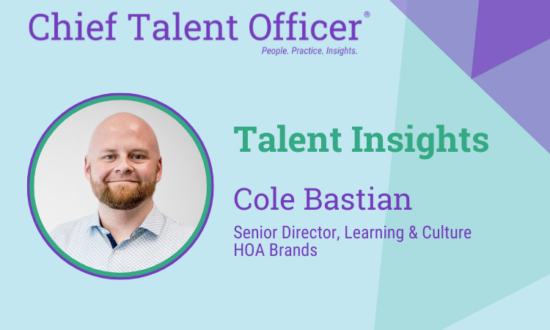Despite a wave of recent headlines detailing layoffs and hiring freezes at major companies, the economy is still undeniably an employee’s market. The unemployment rate has fallen to its lowest level since 1969. With two job openings for every available worker, finding, hiring and retaining talent remains an immense challenge for companies. At the same time, what today’s labor force is looking for from an employer is changing dramatically. Workers want — and now have the power to demand — a workplace that invests in ongoing career training and opportunities for advancement. Career mobility is fast becoming “table stakes” in today’s employers’ value proposition.
Nearly 90 percent of workers said a strong development program and an abundance of career opportunities rank as priorities when considering potential employers during a job search. In one recent survey, conducted by Amazon and Workplace Intelligence, nearly two-thirds of workers said they are likely to leave an employer if there are not ample opportunities for skills development or career advancement. Younger generations will account for most of the workforce by 2025. This talent is even more likely to leave over a lack of advancement opportunities, with three-quarters of Gen Z and Millennial workers saying they’ll move on if they don’t get the skills development they desire.
This desire for skills development is driven, in part, by growing concerns about feeling underprepared for today’s rapidly evolving workforce. About 80 percent of employees say they’re concerned they lack the skills to advance their careers. Nearly 60 percent are worried their skills have gone stale since the pandemic. This presents a big opportunity for employers to provide the career pathing workers want, creating clear opportunities for advancement while providing the education and training they need to reach their full potential.
Such an approach calls for more than simply providing tuition reimbursement or paying for a one-off boot camp. Companies must build a corporate culture that supports — and proactively links — lifelong learning and career mobility.
Workers have good reason for demanding more from their employers. As it turns out, an employee’s talent and drive can only get them so far. Research shows that a company’s formal career pathing practices have a profound impact on the trajectory of their workers. According to the American Opportunity Index, a joint project between the Burning Glass Institute, Schultz Family Foundation and Harvard Business School that assesses employee mobility outcomes at the 250 largest public companies in the United States, if an employee works at a company that lags in how fast it advances its workers, they would need to work a full year longer to be promoted than workers at companies that excel at providing career growth.
After five years, workers at companies with the most effective practices will advance nearly three times further in their careers than those workers at companies with the least effective practices. They will also earn about 2.5 times more than their peers who work in the same positions at less-effective companies, which amounts to $1.5 million over the course of a career.
Companies are starting to recognize not only workers’ increasing interest in seeing training and advancement as core aspects of a company’s culture, but that investing in career pathing has important and tangible benefits as a recruitment and retention strategy.
Accenture, for instance, has committed to hiring 20 percent of its entry-level positions from within its apprenticeship programs. The apprentices receive training that helps prepare them for roles in application development, cybersecurity, data engineering and cloud and platform engineering. The 12-month earn-and-learn model allows workers to get paid market-based wages and receive comprehensive benefits while gaining cutting-edge skills that are necessary for successful careers with the company. The vast majority of apprentices who complete the program stay on with Accenture after graduation, providing the company with a stable pipeline of talent and its apprentices with clear and specific pathways to careers in high-demand fields. With many of the apprentices not having college degrees, the program is a great example of work-based learning serving as a tool for equitable career mobility.
JP Morgan Chase has also made internal mobility a centerpiece of its talent strategy. In 2021, internal candidates filled about one-third of open positions, including nearly 30 percent of senior level roles.
Meanwhile, Walmart’s 1.6 million frontline workforce can enroll in the LiveBetterU program. The company pays for a variety of learning options, including high school completion and college readiness programs, high-quality online degree programs and certifications. Workers can pursue credentials in fields as varied as cybersecurity, supply chain management, transportation and logistics management, and healthcare management — all of which offer advancement opportunities at the company.
Opting for tuition assistance rather than tuition reimbursement means workers immediately have the financial means to pursue their education and career goals. Nearly 90,000 Walmart associates have participated in the program, so far collectively saving about $333 million in tuition costs. LiveBetterU is part of a larger culture of training and advancement at the company. Three-quarters of the company’s salaried employees began as frontline associates. Its current CEO started his career at Walmart as a teenager unloading trucks at a distribution center.
In a similar vein, PepsiCo’s myeducation initiative connects employees to upskilling and reskilling opportunities — including certificates, bachelor’s degrees, and programs in trades — that map to specific career paths within the company.
As more companies offer these kinds of programs, employee demand for aligning training and advancement opportunities in the workplace will only grow. Workers are quickly moving from demanding such opportunities to expecting them. Organizations that do not invest in career pathing now may soon be left behind.
















